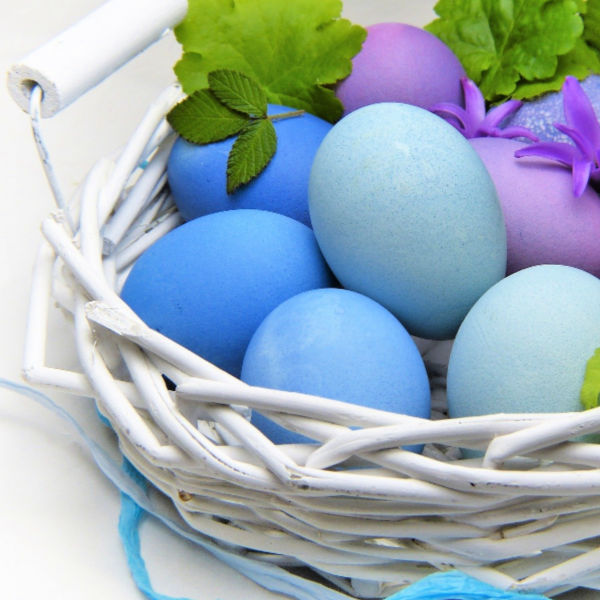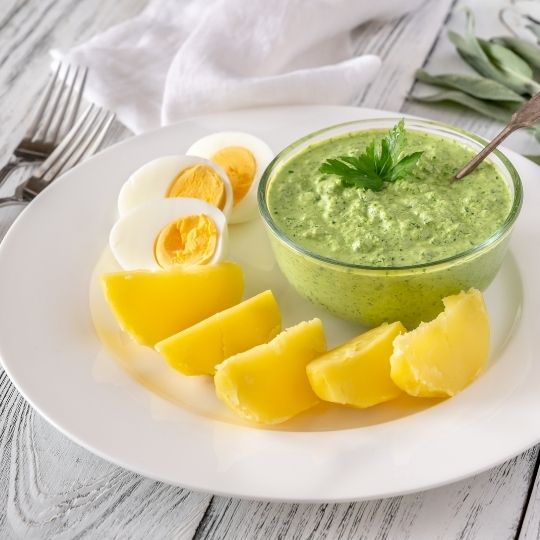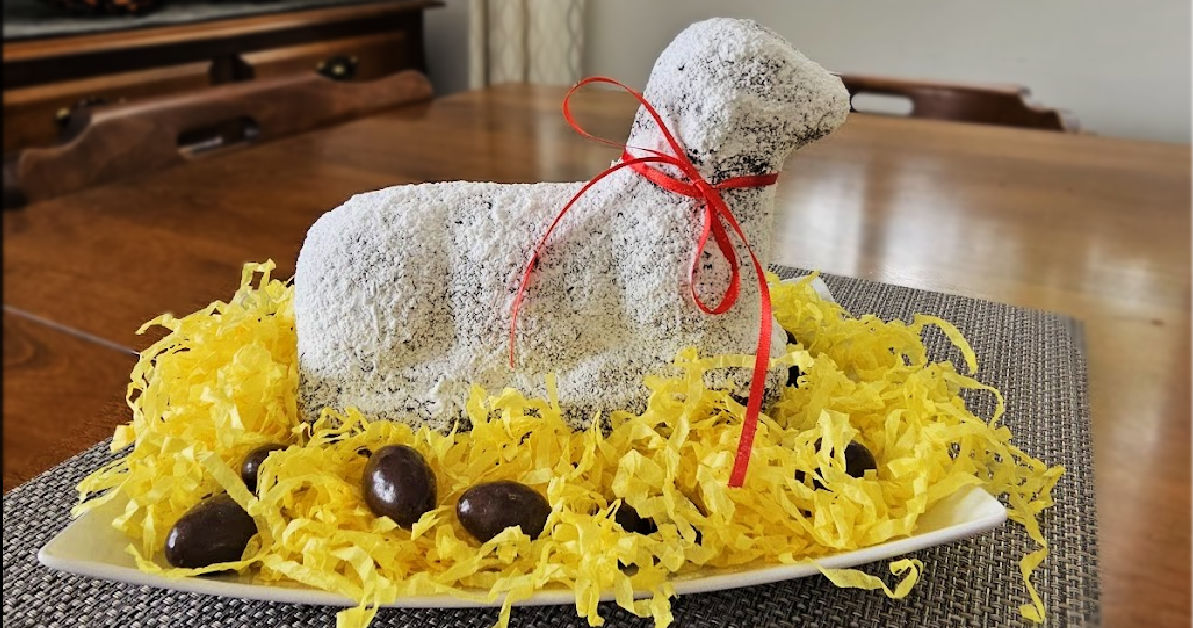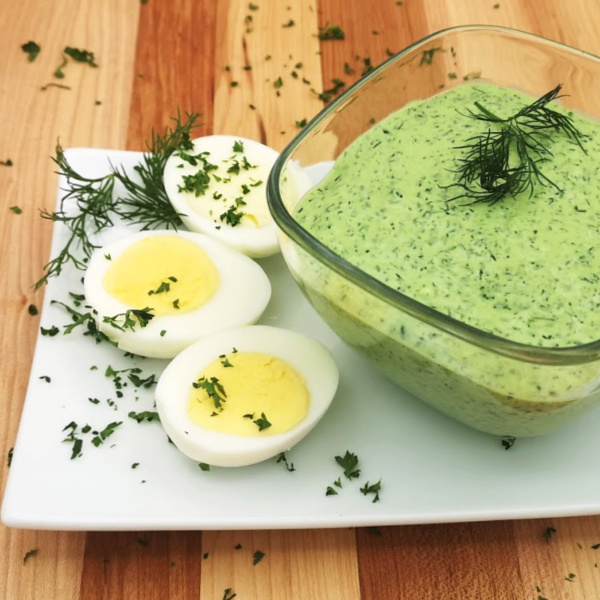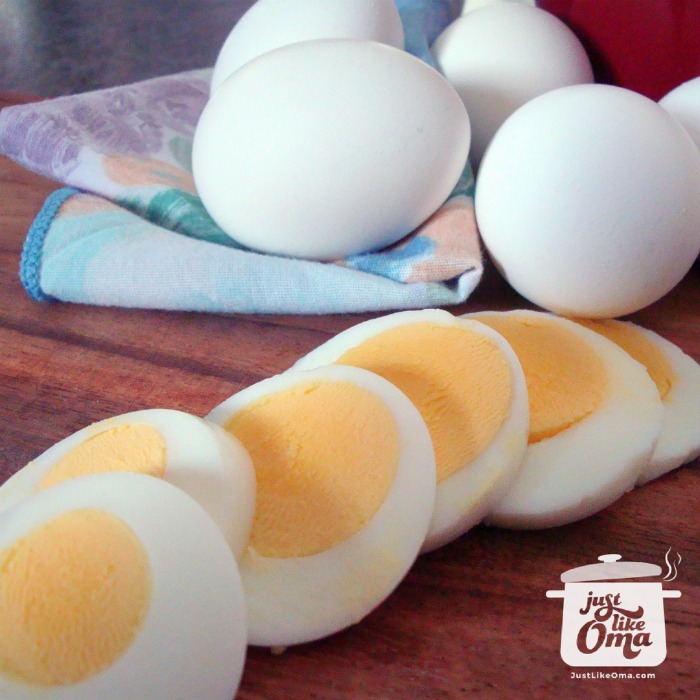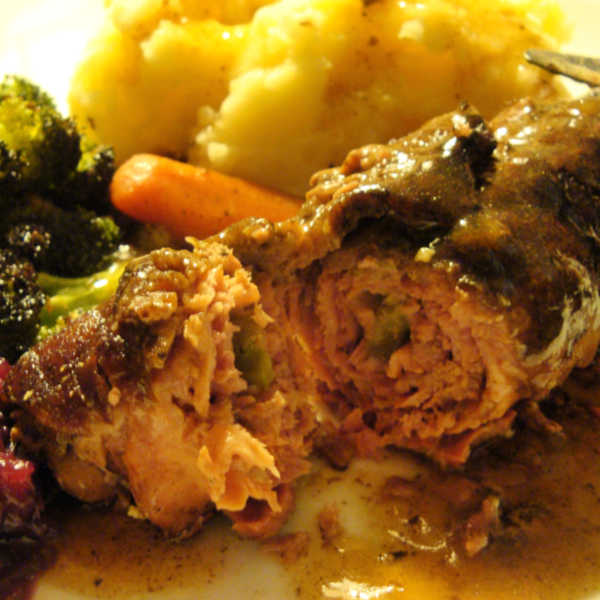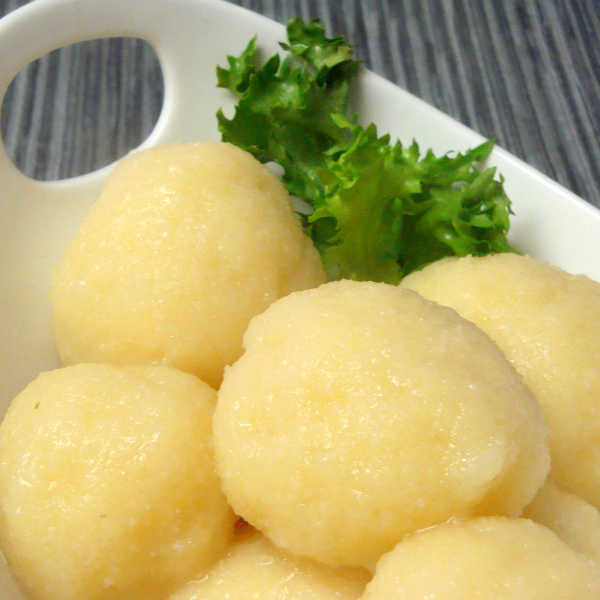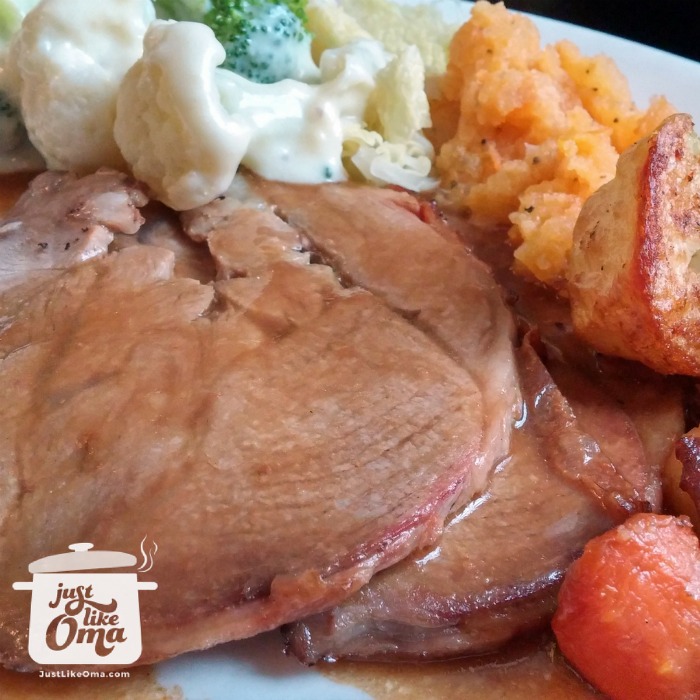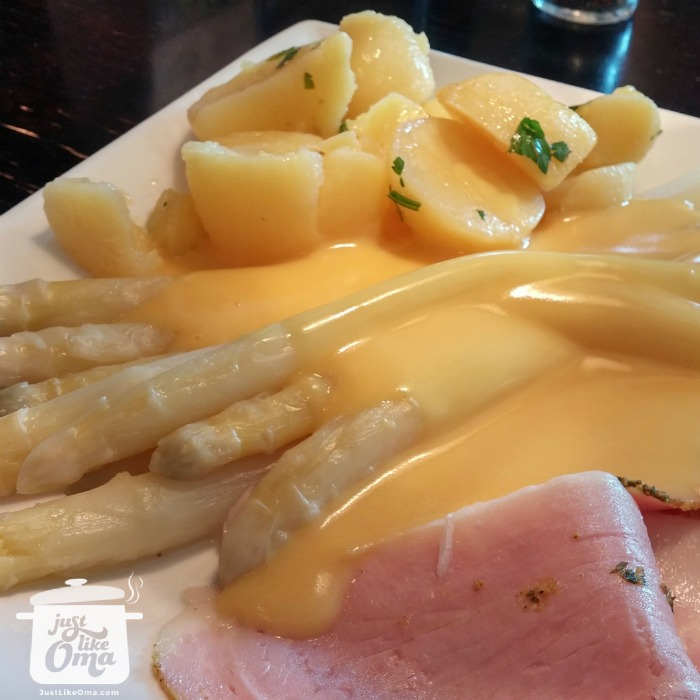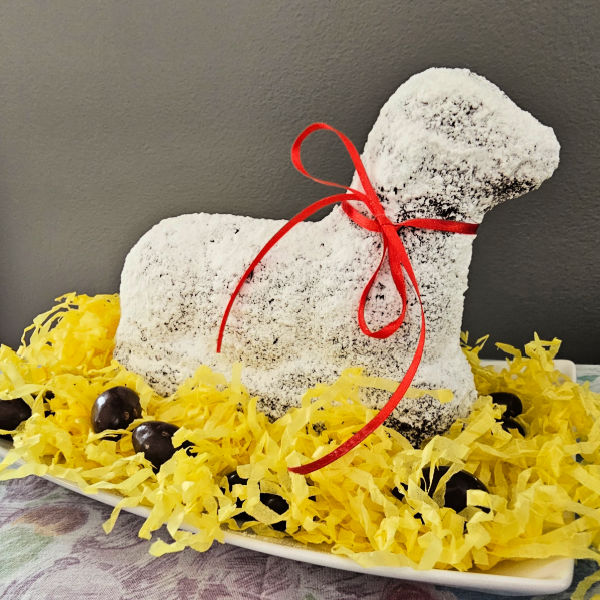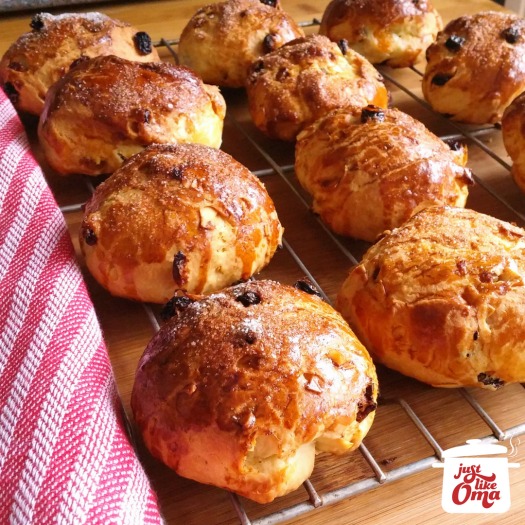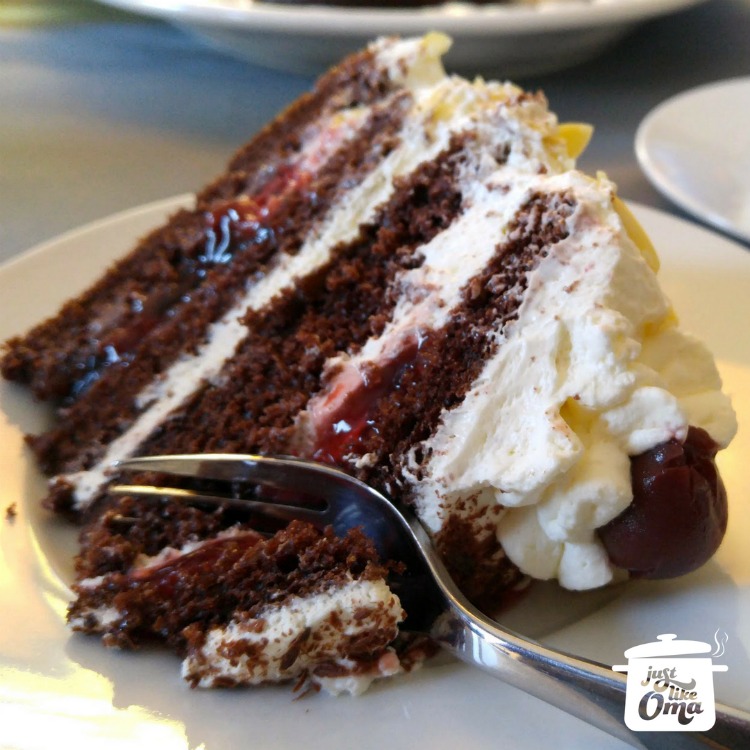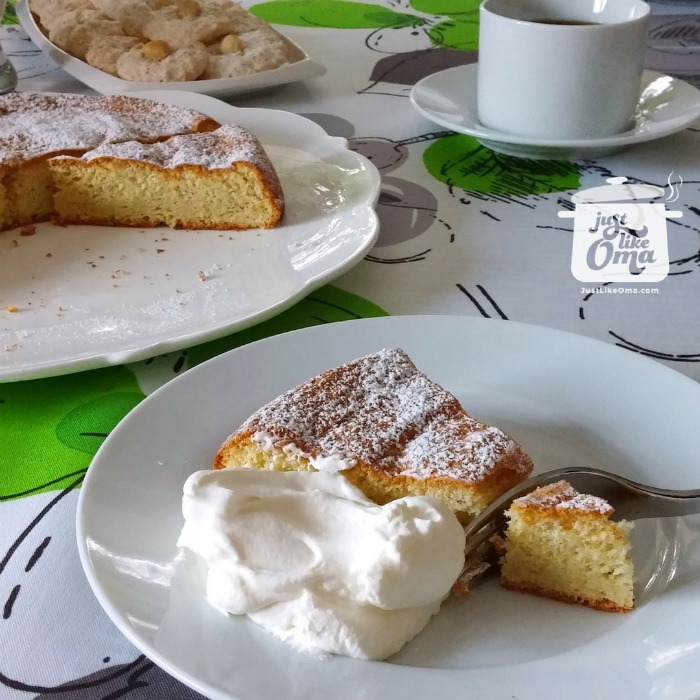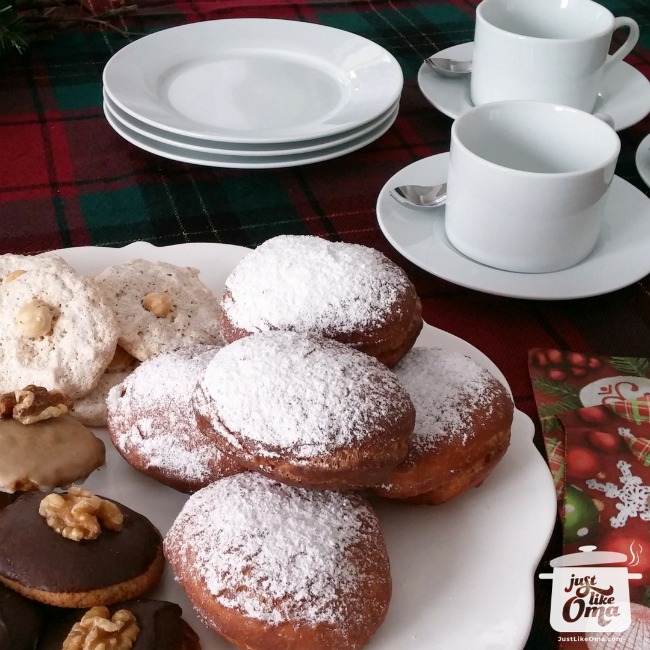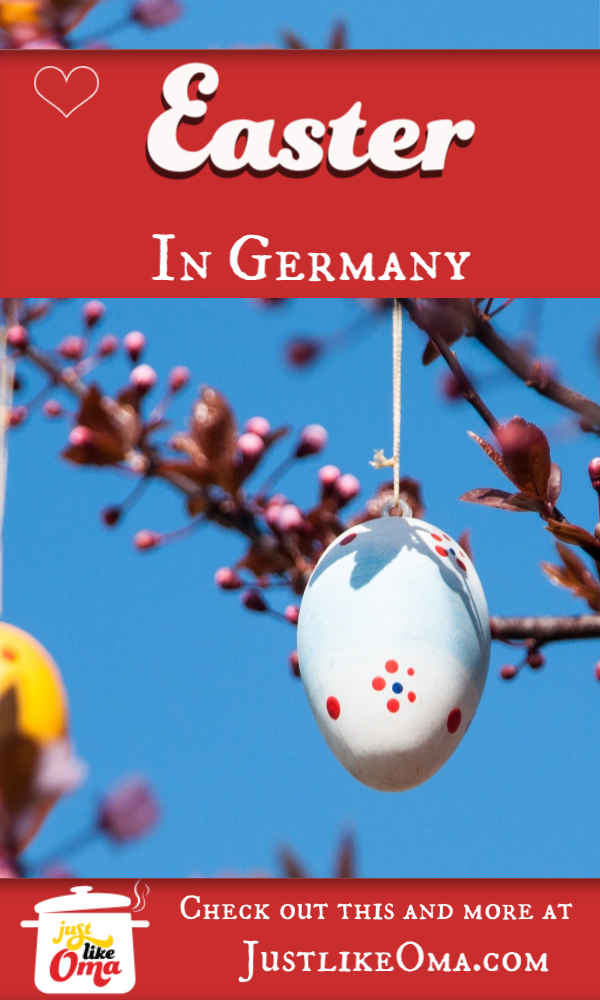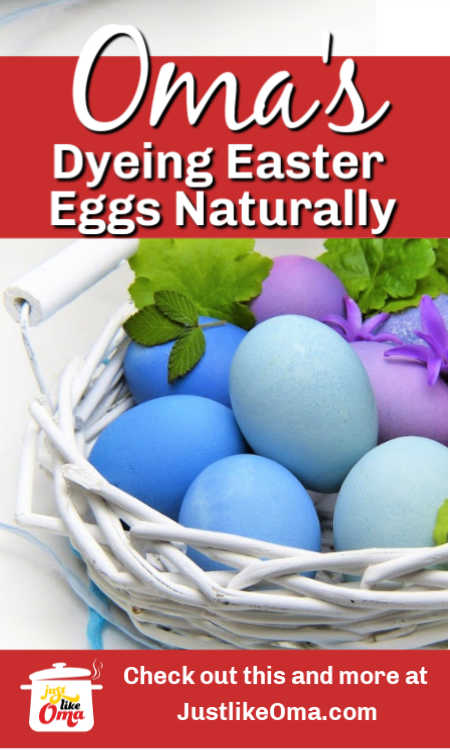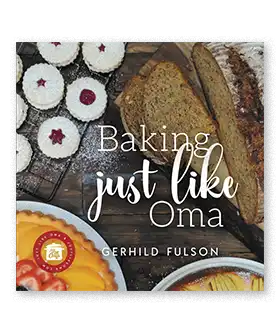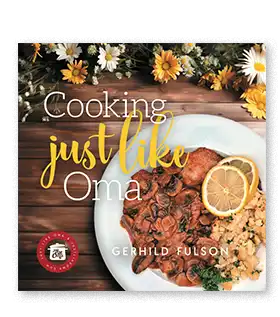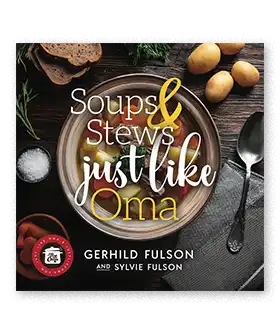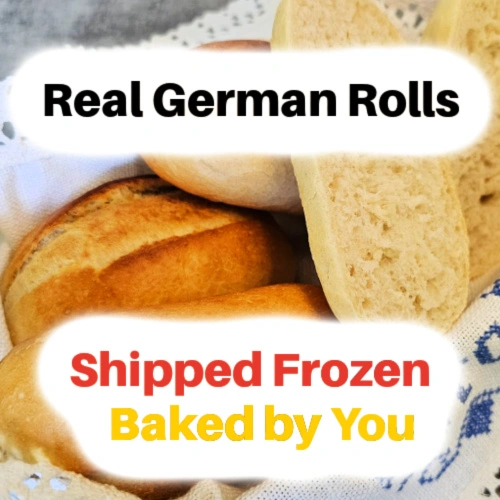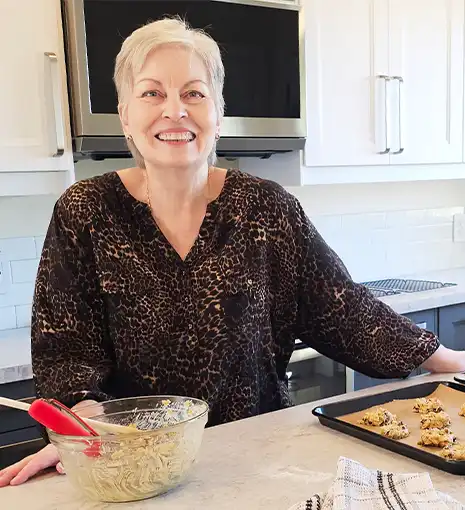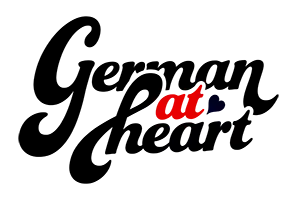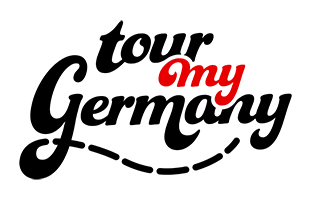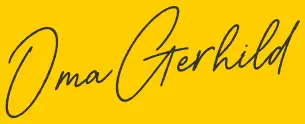Spice up your inbox with FREE German recipes and an exclusive free recipe ebook!
Warm up this winter with Oma's newest cookbooks - available on Amazon >>
Spice up your inbox with FREE German recipes and an exclusive free recipe ebook!
- Home
- German Celebrations and Holidays
- Easter Traditions in Germany
Celebrating Easter Traditions In Germany: Customs & Food

by: Gerhild Fulson / Oma Gerhild shares German recipes rooted in family tradition.
THIS POST MAY CONTAIN AFFILIATE LINKS, WHICH MEANS I’LL RECEIVE A COMMISSION IF YOU PURCHASE THROUGH MY LINKS, AT NO EXTRA COST TO YOU. PLEASE READ FULL DISCLOSURE FOR MORE INFORMATION.
Published: Mar 19, 2023, Updated: April 12, 2025
Discover the Easter traditions in Germany that will engage your senses and uplift your spirit. Ostern is a cultural celebration filled with delight, wonder, and the yummy food listed below.
Easter preparation actually starts many weeks before the date, sometime between March 22 and April 25. Its date is different every year and depends upon when Passover is celebrated. And that is based on the Jewish calendar and the lunar cycle. Easter is always on the Sunday after the first full moon after the spring equinox.
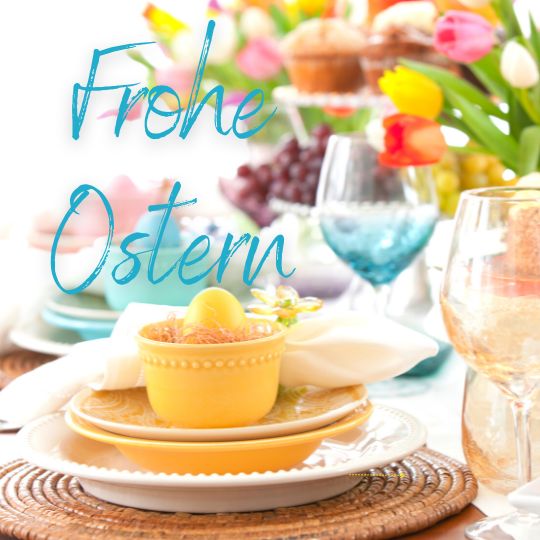
German Easter Markets
Ostermarkt (Easter markets) are in many towns. This German tradition has been going on for generations, where families come together to have a fun day of trying different Easter treats and participate in loads of shopping.
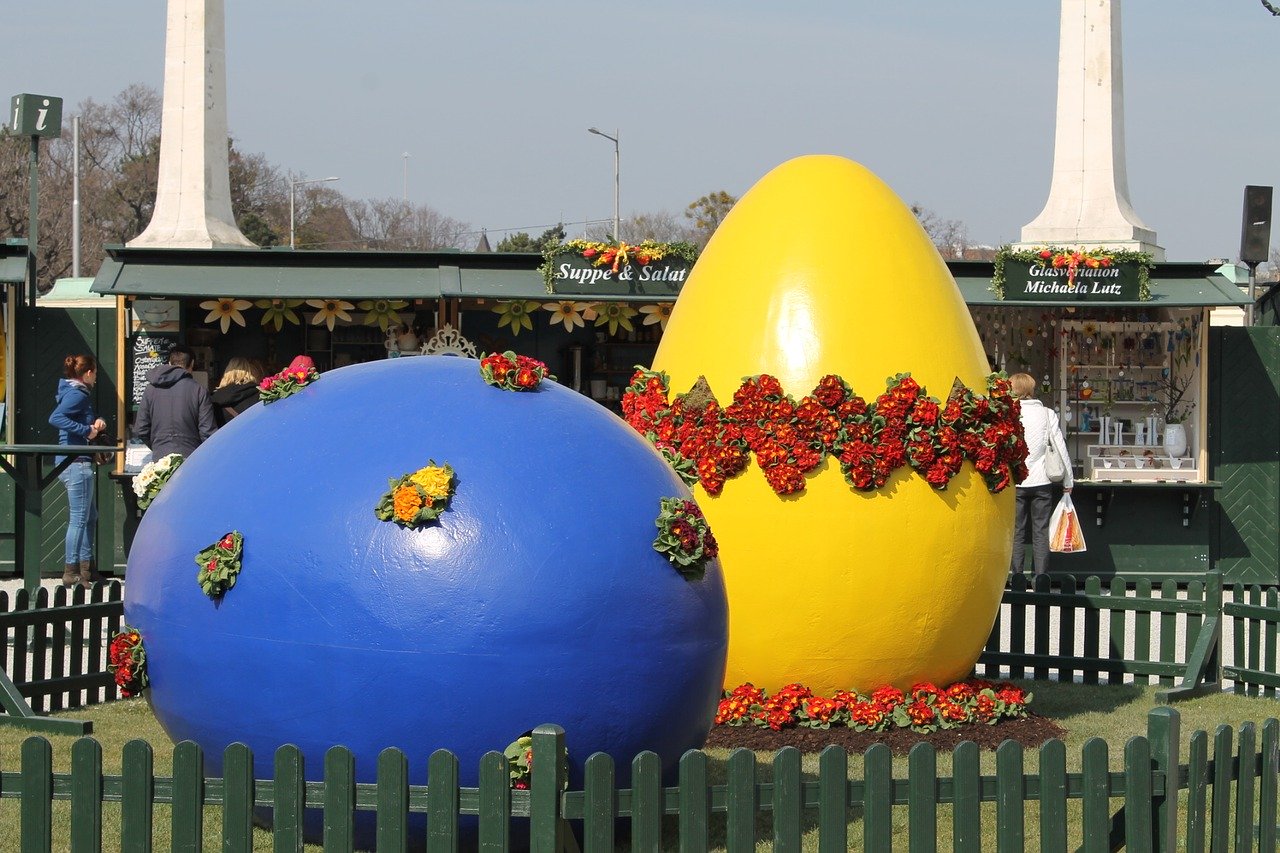 auf dem Ostermarkt
auf dem OstermarktAt the charming market stalls, you'll find a wonderful assortment of ornamental pieces. Vendors offer everything from beautiful hand-painted eggs to handmade ornaments, often made of wood, as well as a wide variety of Easter crafts.
These items are highly sought-after, as Germans widely decorate their homes and gardens, especially with eggs to celebrate Easter with much enthusiasm. Yes, it's treated similarly to Christmas, meaning, of course, there is food. Lots of food and fun. Chocolate bunnies. Chocolate. Yum.
Decorate Your Home, German-style
If you can't make it to the German Easter markets, take a look at my handpicked selection of German-inspired decorations, perfect for adding a touch of tradition to your home. It's a curated list that also includes specialty items made in Germany.
Whether you're looking for something classic or offbeat, you'll discover items to bring a touch of German charm into your home. You'll find the following on my Amazon Shop:
German Easter Decorations
Since Easter eggs and Easter bunnies seem to have originated in Germany, much is seen of this in decorations throughout the country. And since it's the beginning of spring, flowers and baby chicks are also widely used.
One of these German Easter traditions is the Osterbaum, the Easter tree. This is a small tree or several branches adorned with decorated hollowed-out eggs.
Traditionally, raw eggs are prepared by poking pinholes at each end of the shell and blowing the contents out (saving the egg yolk and egg white mixture for Easter baking). These are then allowed to dry out. Once the inside is completely dry, the eggshells are dyed and/or hand painted.
These eggs are hung with ribbons on the tree. If they are hung on just branches, an Osterstrauß, these are either hung from the ceiling or put into vases. Outside, these eggs are usually made from plastic or wood.
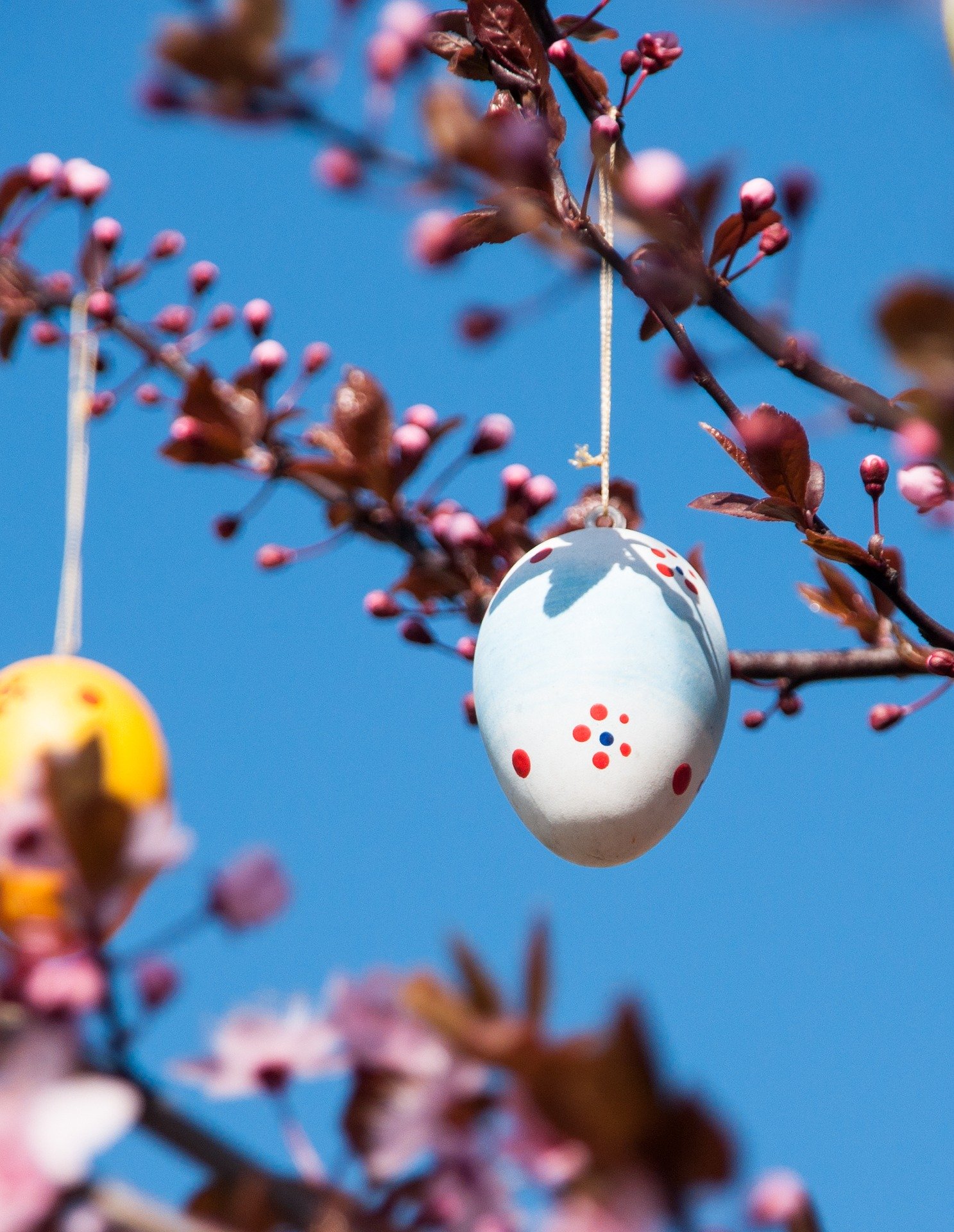 Osterbaum
OsterbaumIn some parts of Germany, one can find Easter fountains, which are the town's water fountain is decorated with flowers, ribbons, and eggs. This, as well as other older German customs from various regions of Germany, were grounded in religious meaning.
Many now, in modern times, are just passed along as a way to maintain the older traditions of German culture, having lost their original purpose.
How To Dye Easter Eggs Naturally
Hard-boiled eggs are colored and hidden in the garden for children to find on Easter morning. If it's too cold where you live, then throughout the house works. That's what my Mutti used to do for us children, and that's what we did with ours.
You can easily dye eggs using natural ingredients. A quick trip through the kitchen and you can be creative in dyeing eggs in a multitude of bright or pastel shades.
You can get the kids involved in decorating using markers, stampers, and even crayons after the eggs have been dyed. These eggs can then be used not only for the traditional Easter Egg Hunt, but also for decorating in one's home.
Pop over to my Amazon Shop and grab these ready-to-go eggs and Easter stamps that are great for imprinting eggs and more (even home-made cards would be a creative idea).
The Easter Celebration – The Christian Holiday
Sunday before Easter
The Sunday before Easter, Palm Sunday, Palmsonntag, is celebrated with the carrying of bouquets as people go through towns on their way to church. Traditional for Palm Sunday would be palm bouquets. Since palms aren't naturally available in Germany, other plants are used, such as pussy willows, cedar, and ivy.
Thursday before Easter
On the Thursday before Easter, the actual celebration starts and continues through the weekend. German food is a major part of this!
Maundy Thursday, called Gründonnerstag (green Thursday) in Germany, naturally needs something grün (green) to eat. Making a cold sauce that includes the wonderful fresh herbs that can be found in the markets is a natural. Frankfurter Grüne Soße is the result. Other choices are soups made with celery, parsley, and/or leeks.
Serving Frankfurter Green Sauce (Frankfurter Grüne Soße) with boiled new potatoes and hard-boiled eggs is traditional for Maudy Thursday.
Friday before Easter
On Good Friday, Karfreitag, the beginning of the religious activities start, with church services remembering the crucifixion of Jesus. The main meal is usually some kind of fish dish. This is mainly a Catholic tradition, but many others also observe this, even in parts of Germany that aren't Catholic. This is a national holiday, meaning stores are closed, and it's a day to spend with family members.
Saturday before Easter
Saturday, Karsamstag, is often spent finishing the last of the preparations for Easter. Easter markets are open, and last-minute shopping, cooking, and baking takes place.
In the evenings, the Osterfeur, (Easter fire) is lit. This was a way to remember the Light of the World, Jesus Christ. Perhaps just a candle would be lit, but typically, it's now a bonfire with a party atmosphere, especially for the young people. Prayer services occur in some churches starting on Saturday evening and continuing until dawn on Easter Sunday.
Either late Saturday evening or early Sunday morning, the Easter treats, chocolate eggs and little gifts are hidden in the garden by the parents for their little ones.
Frohe Ostern!
It's Easter Sunday and with much joy, the resurrection of Jesus Christ is celebrated. This, after all, is the main event, the reason for Easter. It's off to church to celebrate with the church bells ringing, after having been silenced on Good Friday.
After church, once home again, it’s time to enjoy the Easter dinner that has been prepared. Traditionally, the meat is roasted lamb, served with asparagus, potatoes, and a salad.
Of course, other meats can be served. As a treat, we usually had rouladen and potato dumplings, served along with spring peas and carrots.
After dinner, it's time to enjoy this Osterlammkuchen, Easter lamb cake.
Above, the German Easter lamb cake is waiting to be enjoyed after dinner. This one is sitting on a bed of paper grass with dark chocolate almonds sprinkled around.
Monday after Easter
The last day of this celebration is Easter Monday, Ostermontag. As a public holiday, this is again a family day. Since it's the end of winter and the beginning of spring, it's the perfect time to relax outdoors. Hiking is a favorite, as are picnics.
Some Traditional German Easter Recipes
Popular Easter Desserts
Easter desserts often feature eggs, flowers, or bunnies as decorations. A lamb-shaped cake is common, but it’s always appropriate to serve traditional German tortes. A Hazelnuss Torte or the Obsttorte is a treat, as is the famous Black Forest Cake.
* * * * *
Take a look here if you're looking for some unusual ways to celebrate Easter in Germany like a local.
* * * * *
Comments? Questions?
You can leave a comment about this recipe or ask a question...
Pop right over to my private Facebook group, the Kaffeeklatschers. You'll find thousands of German foodies, all eager to help and to talk about all things German, especially these yummy foods.
Meet with us around Oma's virtual table, pull up a chair, grab a coffee and a piece of Apfelstrudel, and enjoy the visit.
Recent Articles
-
Oma's German Rhubarb Cake With Streusel (Rhabarberkuchen mit Streusel)
Dec 13, 25 11:14 PM
This German Rhubarb Cake (Rhabarberkuchen mit Streusel) tastes just like Mutti’s … sweet, tart, buttery, and baked with love. -
German Plum Cake Recipe (Streusel Pflaumenkuchen / Zwetschgenkuchen)
Dec 13, 25 09:36 PM
Looking for a real German plum cake? This Zwetschgenkuchen brings tender plums, buttery crumble, and simple homemade comfort in every bite. -
Authentic German Oven-Cooked Goulash Soup Recipe (Gulaschsuppe)
Dec 13, 25 08:37 PM
My authentic German goulash soup (Gulaschsuppe) is oven-cooked for deep flavor, with tender beef, potatoes, and plenty of paprika
PIN this ...
The GOOD NEWS
Jesus told her, “I am the resurrection and the life. Anyone who believes in me will live, even after dying. Everyone who lives in me and believes in me will never ever die. Do you believe this ...?"
John 11:25-26 (NLT)




